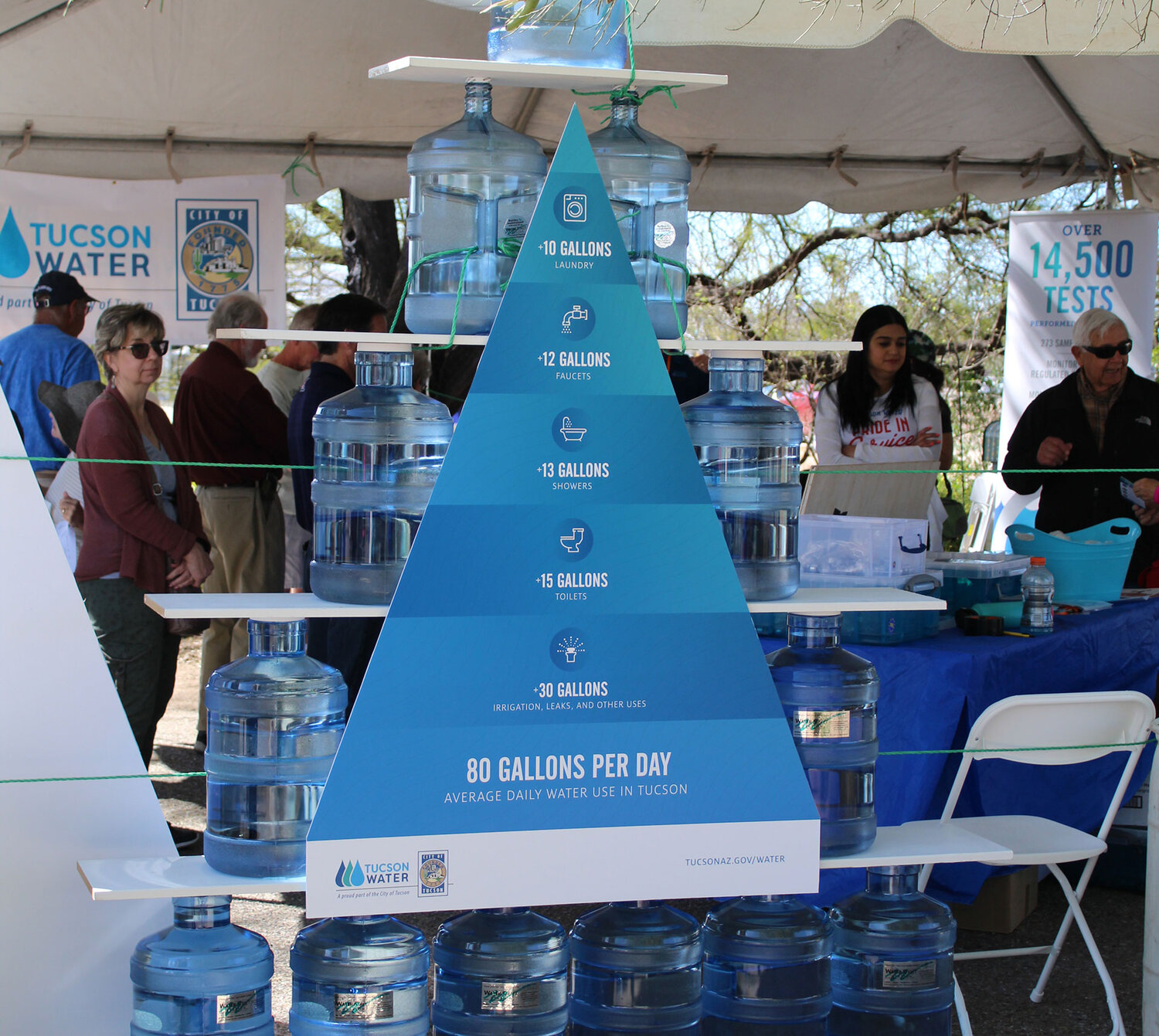Rain and stormwater harvesting are a small but growing component of Tucson’s water supply. Although it is unmetered, the estimated amount of rain and stormwater collected is represented by the green line on top of the water production graph.
There are two general categories of rainwater harvesting; active and passive. Active rainwater harvesting refers to a tank or cistern storing rainwater collected from roofs, which provides a means to store the rainwater for later use. Passive rainwater harvesting refers to directing and retaining water in the landscape using site appropriate practices such as basins, berms, terraces, swales, and infiltration trenches.
Stormwater harvesting refers to rainwater collected from non-roof surfaces, such as streets, parking lots, hardscapes, and landscapes. Strategies to capture and utilize this water include landscaping design to retain water in soil, semi-porous hardscape material, curb cuts, and detention/retention basins.
For more information on Storm to Shade, please visit the City of Tucson’s Green Stormwater Infrastructure program website .








